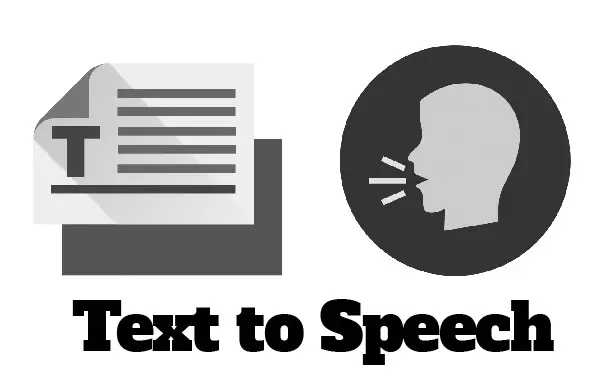Have you ever wondered what it would be like to live in a world where communication and accessibility were not limited by physical or cognitive challenges? As someone who has personally witnessed the frustration and isolation that individuals with speech impairments or learning disabilities can experience, I know how important it is to have access to effective assistive technology. That’s why I am excited to explore the power of text-to-speech assistive technology in this article. Whether you are an individual looking for ways to improve your own communication, a caregiver for someone with special needs, or simply curious about this technology, get ready to discover how text-to-speech can enhance our lives and create a more inclusive society. So let’s dive into the world of text-to-speech assistive technology!
So, text-to-speech assistive technology?
Assistive technology has come a long way in improving accessibility and communication for individuals with disabilities. One powerful tool that has emerged is text-to-speech technology, which allows written text to be converted into spoken words.
This technology has greatly enhanced communication for those who have difficulty reading or writing due to visual impairments, learning disabilities, or other conditions. By simply typing out a message on a computer or mobile device, the user can have it read aloud by the text-to-speech software. This not only makes it easier for them to understand and respond to information but also helps them feel more included in conversations and interactions.
Furthermore, this technology has opened up new opportunities for education and employment for individuals with disabilities. With access to text-to-speech tools, they are able to participate fully in academic settings and workplace environments where written materials are commonly used.
In addition, text-to-speech assistive technology has also made digital content more accessible for everyone. Websites, e-books, and other online resources can now be easily accessed by those who struggle with traditional forms of reading.
Overall, the power of text-to-speech assistive technology cannot be underestimated. It not only enhances communication but also promotes inclusivity and equal opportunities for individuals with disabilities. As we continue to advance in our technological capabilities, let us strive towards creating a world where everyone can communicate effectively regardless of their abilities.
Understanding Text-to-Speech Assistive Technology: Features and Benefits
Text-to-speech (TTS) assistive technology has become a vital resource for many individuals, especially those with learning disabilities or visual impairments. This innovative tool transforms written text into spoken words, making it easier to access information in accessible formats. One of the most notable features is its ability to read aloud from various sources such as books, websites, and emails. Additionally, users can often customize voice settings—choosing different accents or speeds—allowing for a more personalized experience that caters to individual preferences.
The benefits of TTS technology extend beyond mere convenience; they play a significant role in enhancing comprehension and retention. For students who may struggle with reading fluency, hearing text read aloud can provide clarity and support learning without frustration. Moreover, this technology promotes independence by allowing users to consume content on their own terms. Imagine enjoying an audiobook while cooking dinner or listening to a document during a commute! The versatility of TTS makes it an invaluable tool in both educational environments and daily life situations where accessibility matters most.
In summary, understanding the features and benefits of text-to-speech helps illuminate how this remarkable technology opens doors for countless people seeking greater autonomy in their interactions with written language.

Exploring Applications of Text-to-Speech Technology in Everyday Life
Text-to-speech technology has woven itself into the fabric of our daily lives in fascinating ways. Imagine a world where words leap off the page and come alive with sound! This innovative tool is not just for reading stories aloud; it enhances accessibility, allowing people with visual impairments to experience written content through auditory means. Schools are leveraging this technology, enabling students to listen to textbooks and other educational materials as they follow along. It’s like having a personal narrator who brings learning to life, making lessons more engaging and interactive.
Beyond education, text-to-speech can be found in various applications that make life easier. For instance, smart assistants use this technology to respond to questions or control smart home devices by speaking back answers clearly. Additionally, when navigating unfamiliar streets or cities using GPS devices or smartphone apps, users benefit from spoken directions that help them stay focused on the road ahead. Even businesses are utilizing text-to-speech systems for customer service calls—offering quicker responses without waiting on hold!
In many ways, this remarkable technology creates connections between people and information that would otherwise remain unspoken.
- Improves accessibility
- Aids education
- Simplifies navigation
Read also: api speech recognition
The Role of Text-to-speech technology in Education and Learning Environments
Text-to-speech technology has become a remarkable tool in education, offering a new way for students to engage with learning materials. Imagine a child struggling with reading; suddenly, they can hear the words spoken aloud in clear, expressive tones. This auditory support allows them to focus on understanding the content rather than getting caught up in decoding each word. Listening enhances comprehension and retention, making it easier for learners of all ages to absorb information. Furthermore, when students listen to texts being read back to them, they begin to develop their own speaking skills and gain exposure to proper pronunciation.
In addition to aiding those who struggle with reading or have learning disabilities like dyslexia, text-to-speech tools promote inclusivity within diverse classrooms. Educators can utilize this technology for various purposes: helping English language learners grasp complex vocabulary or allowing visually impaired students access course materials more easily. With options like adjusting speech speed and voice selection, these tools cater uniquely to individual needs.
A classroom enriched by such technologies not only fosters independence but also inspires collaboration among peers as everyone engages with the material at their own pace while sharing insights together. The future of education is indeed becoming more accessible thanks to innovations like text-to-speech!
The Future of Text-to-Speech Assistive Technology: Challenges, Opportunities and Predictions.
As we look ahead at the future of text-to-speech assistive technology, it’s clear that both challenges and opportunities lie in wait. One major hurdle is achieving natural-sounding speech. While current programs can convert text into audible words, they often lack the subtle nuances of human voice—intonation, emotion, and even accent. Developers are working hard to improve this by using advanced algorithms and neural networks to create voices that sound more lifelike. Imagine a world where a computer can express excitement or sadness just like you do! This would not only enhance communication for those with disabilities but also foster deeper connections between people.
On the flip side, there are exciting opportunities on the horizon. With advancements in artificial intelligence, these tools have become increasingly accessible and customizable. Users could personalize their experience by choosing voices that resonate with them or adjusting speech speed for clarity. Additionally, integrating text-to-speech features into daily devices—from smartphones to smart home assistants—opens up new realms of independence for those who rely on them. In short, while obstacles remain on the path toward perfecting this technology, its potential impact is profound: empowering individuals and enriching lives through improved interaction with our digital world.



